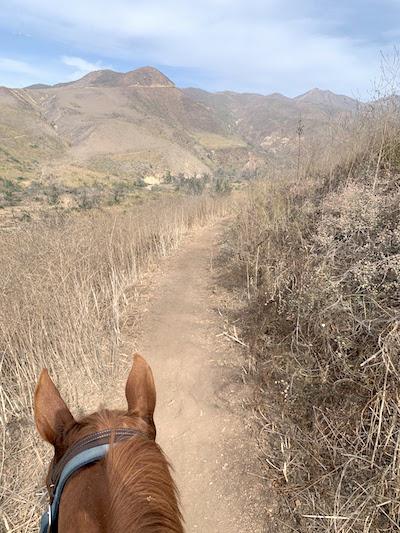
Rangers at Santa Monica Mountains NRA will patrol on bikes and horses to educate all users on trail etiquette/NPS
Put hikers, cyclists, and horseback riders on the same trail network and some issues can arise. That's why rangers at Santa Monica Mountains National Recreation Area in California are taking to the trails on mountain bikes and horseback to try to educate all users on trail etiquette.
The weekly patrols, which are to start Tuesday, will aim to dispel the confusion that can often arise on the 500 miles of multi-use trails in Santa Monica Mountains National Recreation Area, park staff said. The 12-month educational campaign aims to clear up confusion on the trails.
“Let’s say you’re hiking on a trail and you come upon an equestrian coming up behind you and a mountain biker zooming downhill from the other direction - what is everyone supposed to do?” said Coby Bishop, the NRA's supervisory law enforcement ranger. “Spending time in the outdoors should not be complicated, and visitors are often unclear on who should yield and to whom.”
"Yield" means to slow down, establish communication, be prepared to stop, and pass others in a safe manner, he explained.
“We will be out there in a way that makes it easy to have conversations with the public about trail etiquette and how we can all be respectful toward one another while recreating,” Bishop added. “Visitors are not always clear on these rules of engagement and that can turn into a safety issue that could have easily been avoided.”
The most basic rule on a multi-use trail is that the equestrian, sitting atop a very large animal who can sometimes become unwieldy or startled, does not yield to anyone and always has the "right of the way."
Upon spotting a horse, hikers and bikers should immediately stop and wait on the downhill side of the trail. Communicating with the rider is important. Say "hello" and ask how you should proceed. To a horse, a human voice registers to them that you are OK. Horses can perceive hikers wearing tall backpacks, big hats or even trekking poles as threats.
Individuals on bikes, in turn, should always yield to hikers and equestrians. Hikers should yield to equestrians.
Other trail etiquette rules include:
-
Listening for cyclists, runners and equestrians approaching from behind. If one hears “on your left” from behind, they should move to the right and allow them to pass.
-
When hiking in a group, hike single file on narrow trails or stay to the right side on wider trails. When hiking downhill, yield to those hiking up. Obey posted rules about dogs and keep them on a short leash (6’ or less).
-
If hiking with a child, hold their hand when passing. Don’t approach or pet the horse without first getting permission.
-
All trail users should observe the 15 mph speed limit.



Add comment